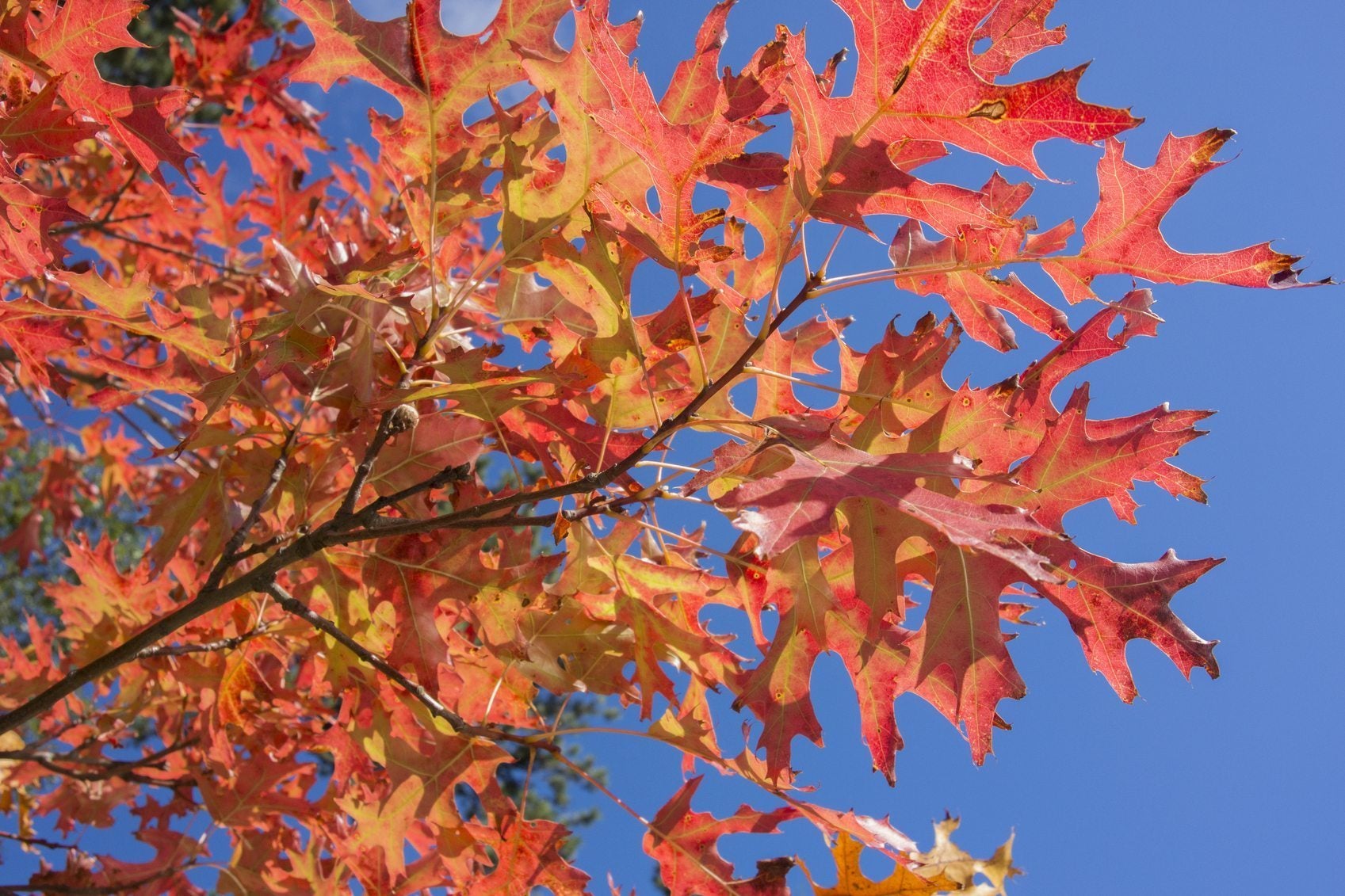Pin Oak Growth Rate: Tips On Planting A Pin Oak Tree


“Today's mighty oak is just yesterday's nut, that held its ground,” said author David Icke. Pin oak trees are mighty oaks that have held their ground as a fast growing, native shade tree in the eastern part of the United States for hundreds of years. Yes, that’s right, I did just use “fast growing” and “oak” in the same sentence. Not all oaks are as slow growing as we generally think they are. Continue reading to learn about pin oak growth rate and using pin oaks in landscapes.
Pin Oak Information
Native east of the Mississippi River and hardy in zones 4 through 8, Quercus palustris, or pin oak, is a large, full, ovate shaped tree. With a growth rate of 24 inches (61 cm.) or more per year, it is one of the faster growing oak trees. Tolerant of wet soils, pin oak trees usually grow 60 to 80 feet (19-25 m.) high and 25 to 40 feet (8-12 m.) wide – though in the right soil conditions (moist, rich, acidic soil), pin oaks have been known to grow over 100 feet (30.5 m.) tall. A member of the red oak family, pin oaks will not grow in areas of high elevation or on slopes. They are usually found in damp lowlands and near rivers, streams, or lakes. Pin oak acorns are often dispersed far from the parent plant and germinated by spring flooding. These acorns, as well as the tree’s leaves, bark, and flowers, are a valuable food source to squirrels, deer, rabbits, and various game and songbirds.
Growing Pin Oaks in Landscapes
During the summer, pin oak trees have dark green, glossy leaves that turn a deep red to bronze color in the fall and hang on throughout winter. The beautiful foliage hangs from thick, dense branches. Having a rather ovate shape that turns more pyramidal with age, pin oaks’ lower branches hang down, while the middle branches reach out horizontally and the upper branches grow upright. These pendulous lower branches can make pin oak a not-so-good choice for street trees or small yards. What makes pin oak an excellent tree for large landscapes is its quick growth, beautiful fall color, and winter interest. It also has the ability to provide dense shade, and its shallow fibrous roots make planting a pin oak tree easy. On young trees, the bark is smooth, with a red-gray color. As the tree ages, the bark becomes darker gray and deeply fissured. Pin oaks can develop iron chlorosis if soil pH is too high or alkaline, which causes leaves to turn yellow and drop prematurely. To correct this, use acidic or iron rich soil amendments or tree fertilizers. Other problems pin oaks can develop are:
- Gall
- Scale
- Bacterial leaf scorch
- Oak wilt
- Borers
- Gypsy moth infestations
Call a professional arborist if you suspect any of these conditions with your pin oak.
Gardening tips, videos, info and more delivered right to your inbox!
Sign up for the Gardening Know How newsletter today and receive a free copy of our e-book "How to Grow Delicious Tomatoes".
-
 12 Lush Alternatives To A Lawn For Sustainable Spaces
12 Lush Alternatives To A Lawn For Sustainable SpacesAlternatives to a lawn are beautiful and also beneficial to your local ecosystem and its pollinators. Explore our top picks for plants to replace grass.
By Tonya Barnett
-
 Types Of Tomatoes Explained: Explore The Many Wonderful Shapes, Colors, Flavors, & Best Uses
Types Of Tomatoes Explained: Explore The Many Wonderful Shapes, Colors, Flavors, & Best UsesThe world of tomato varieties is vast and fascinating. Learn about the key types to grow in your garden, tailored to your preferences and space.
By Amy Grant